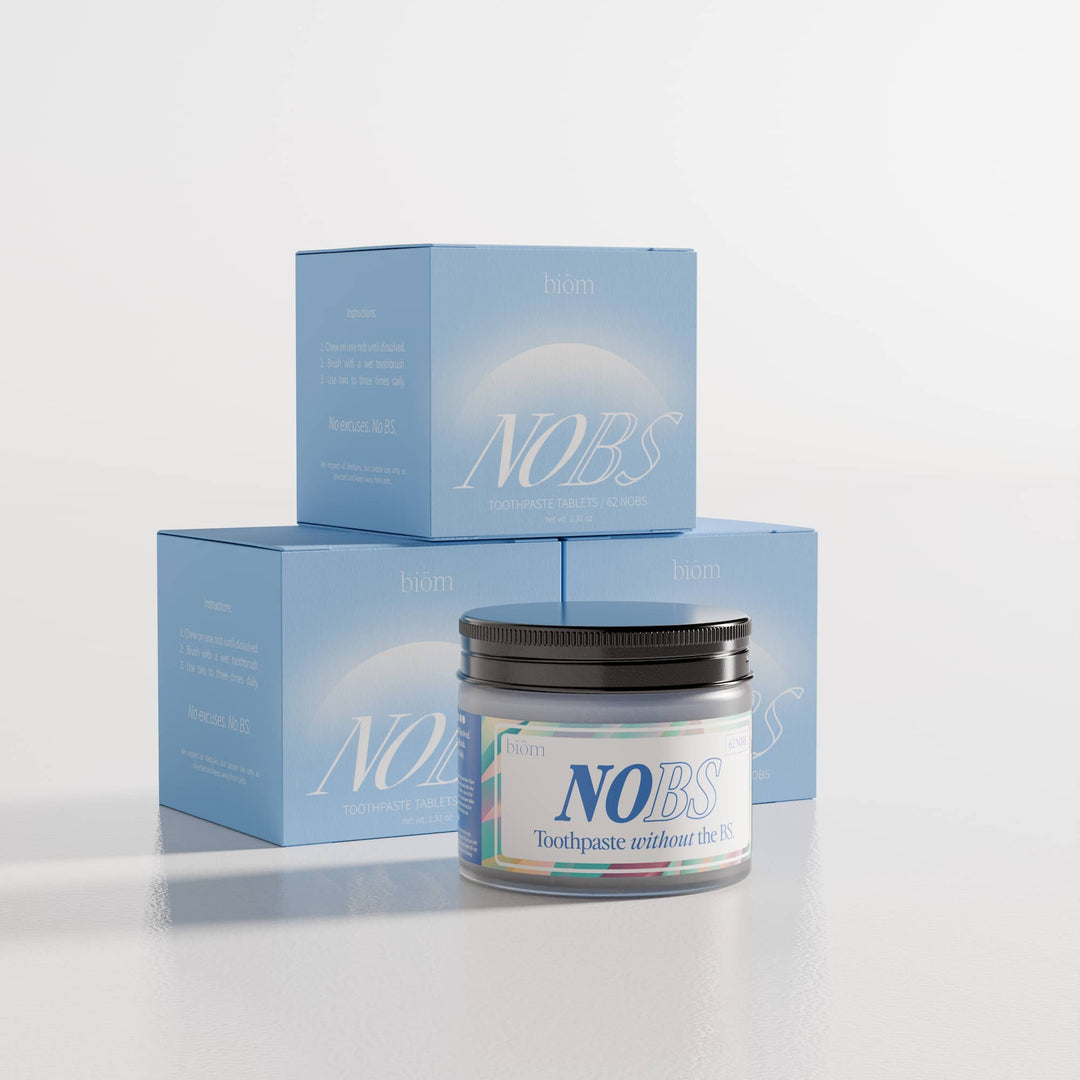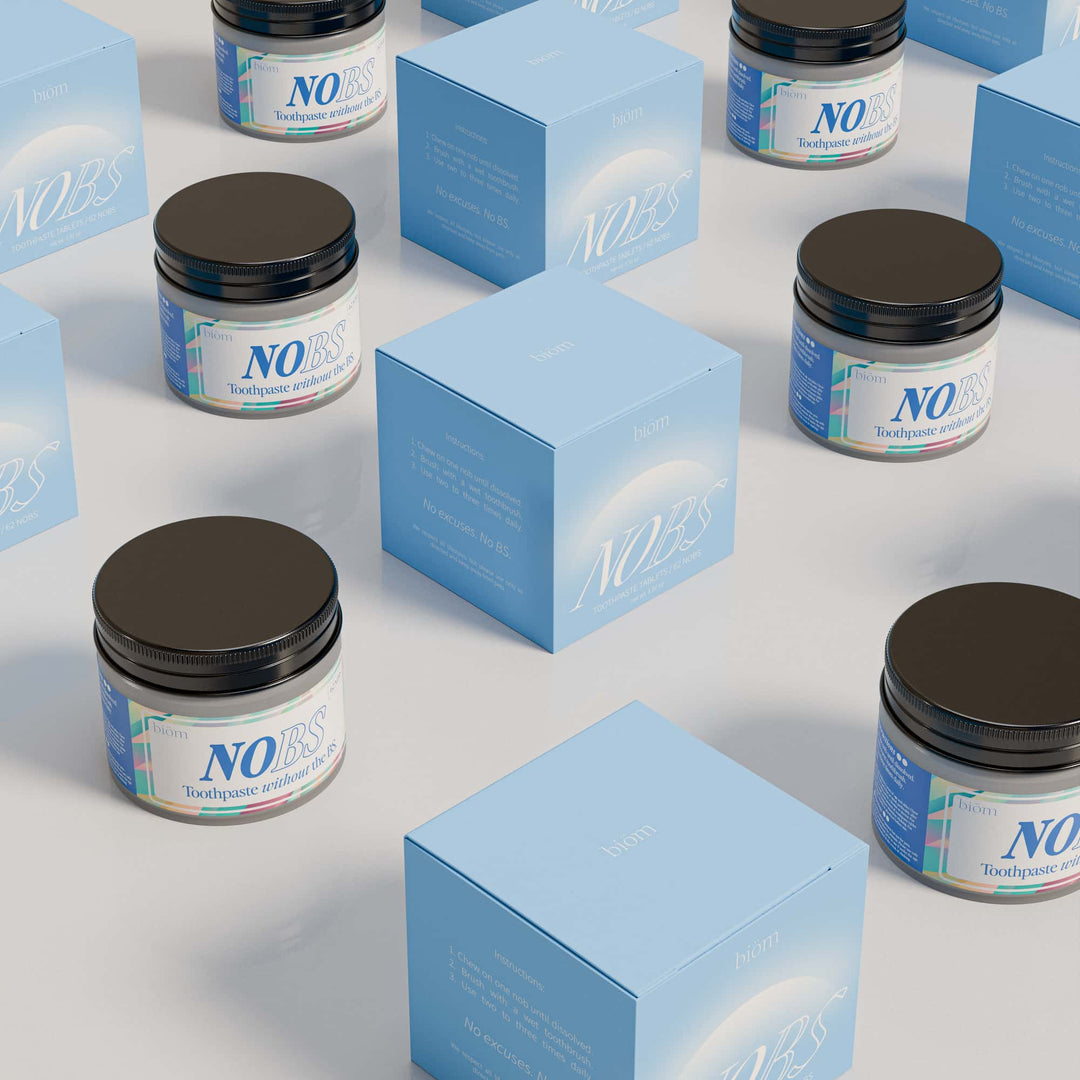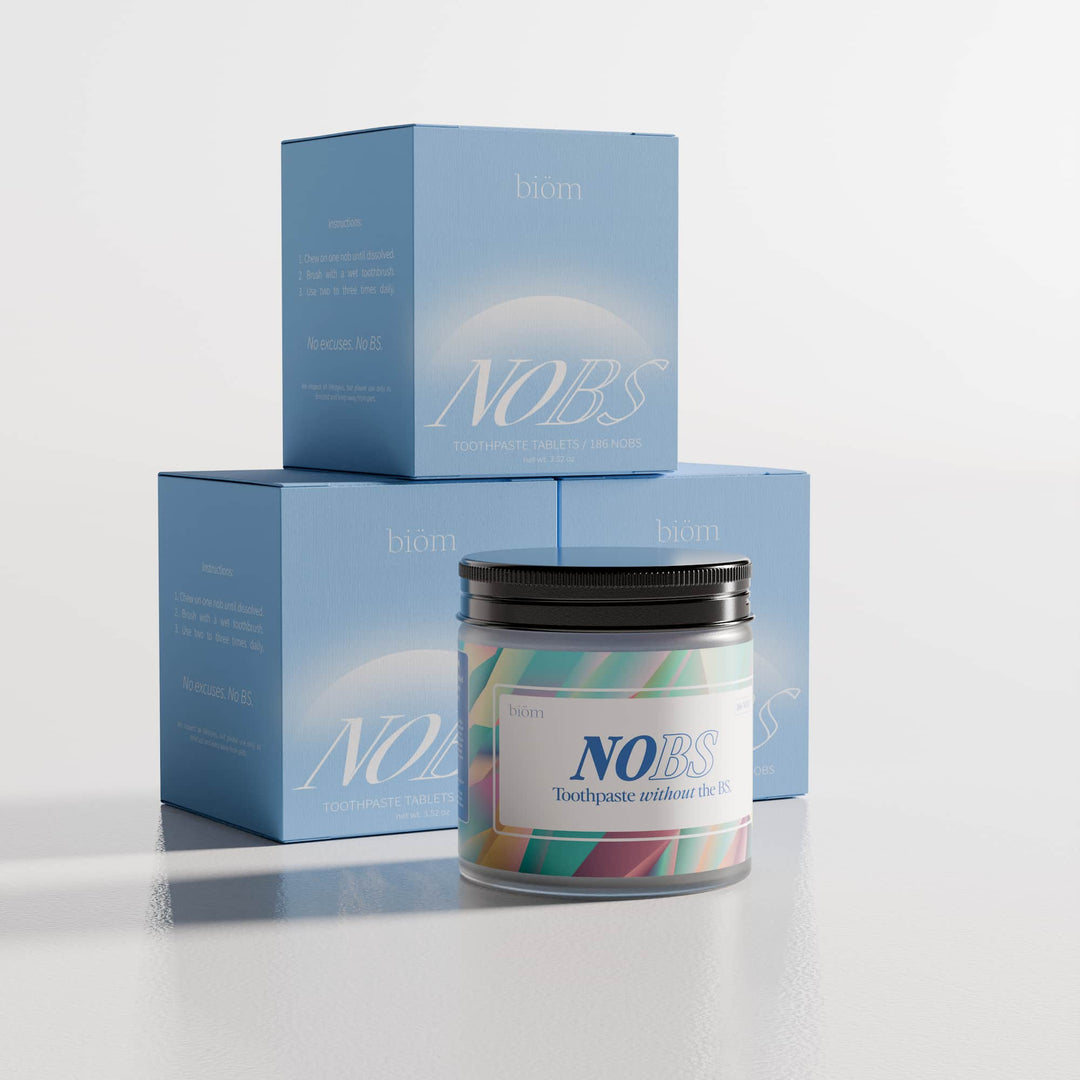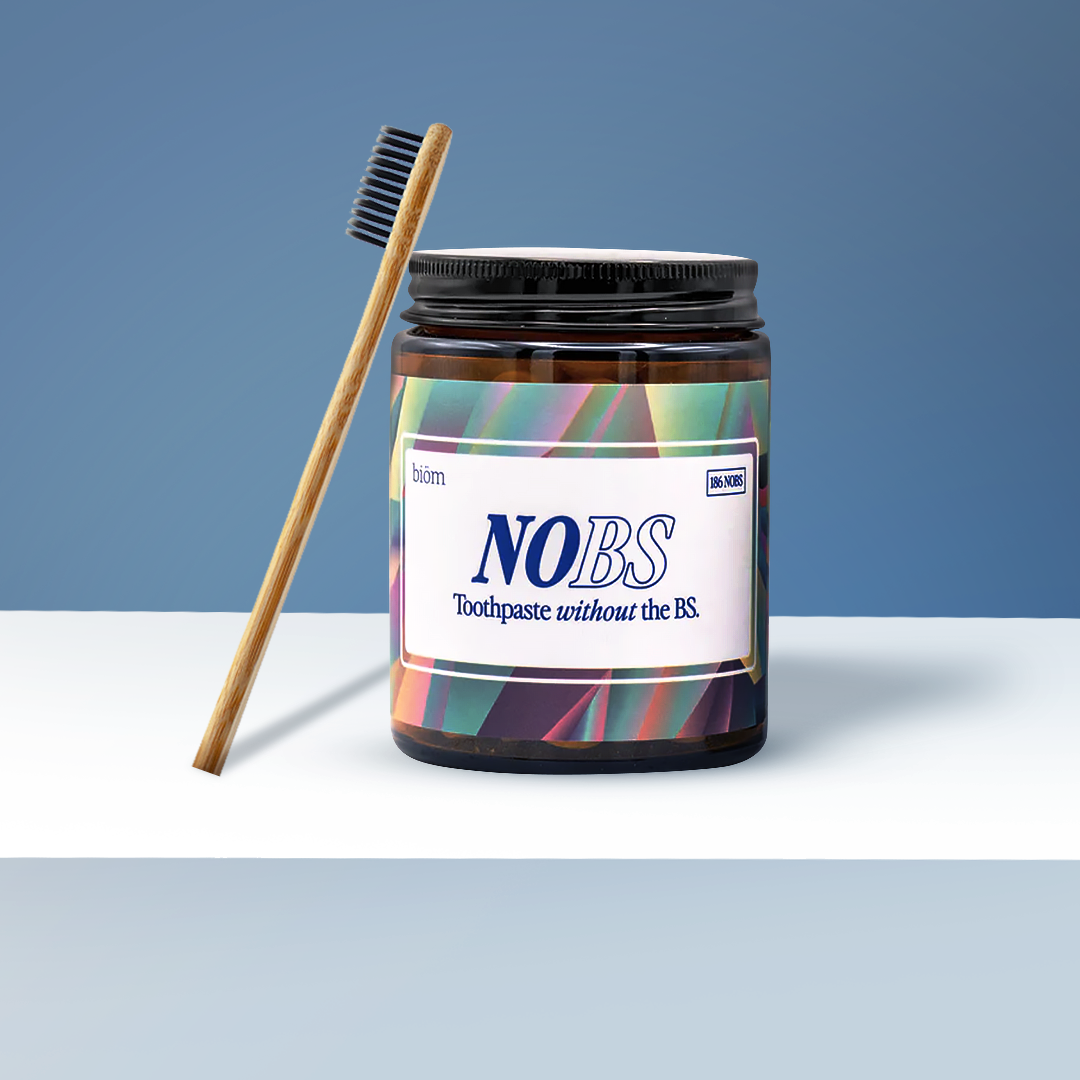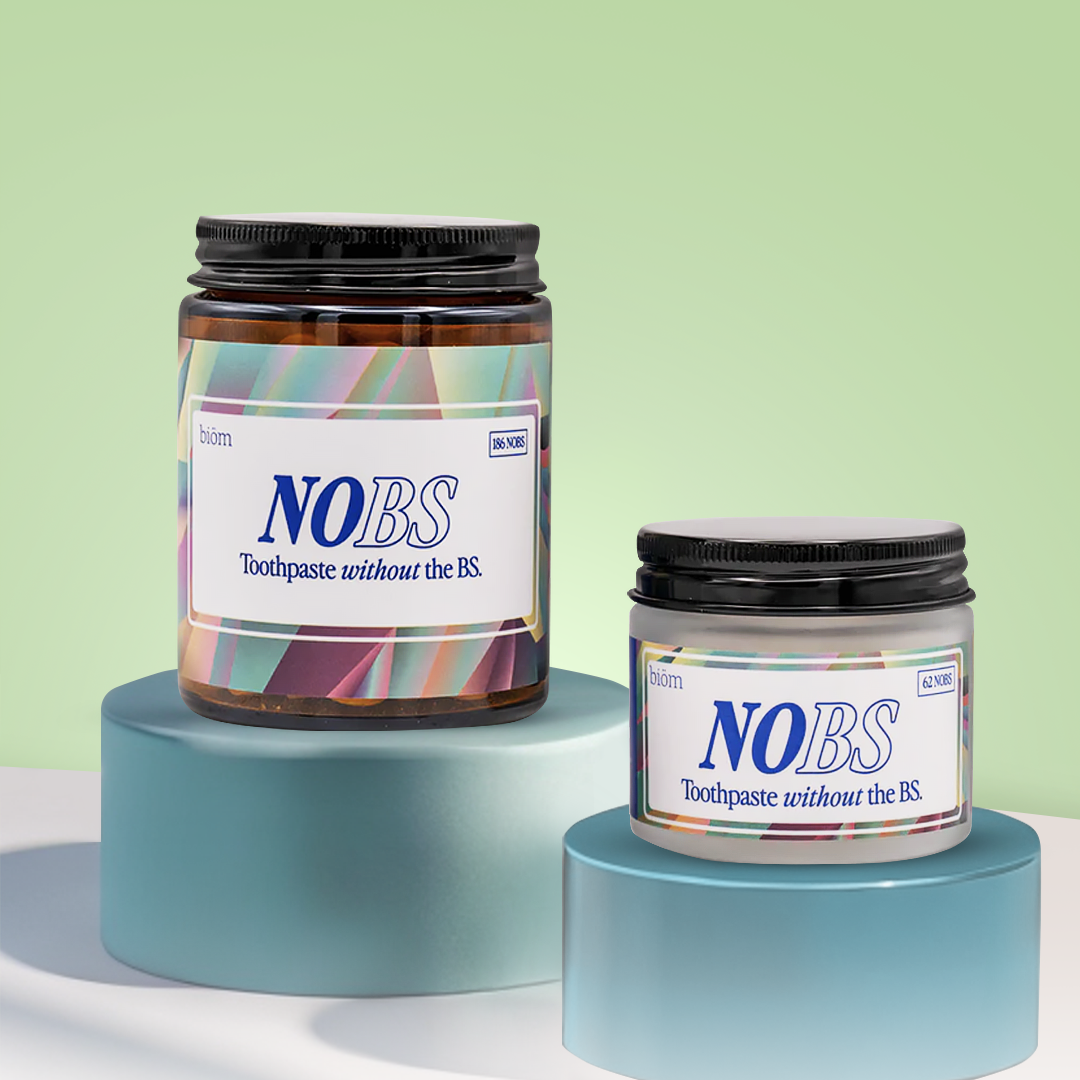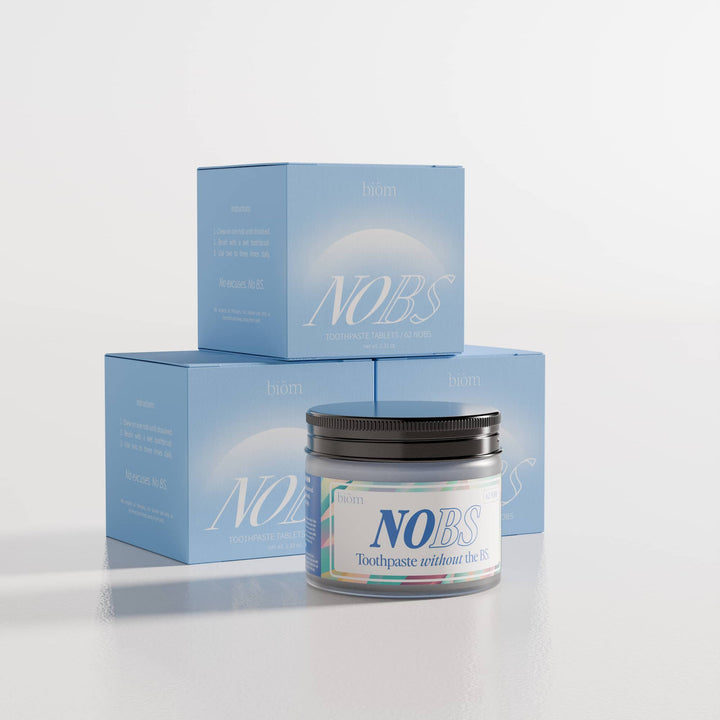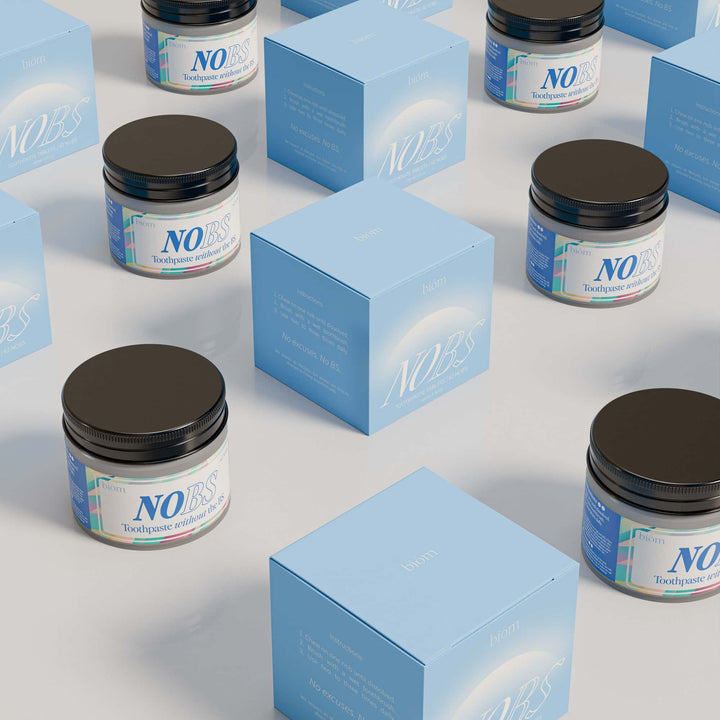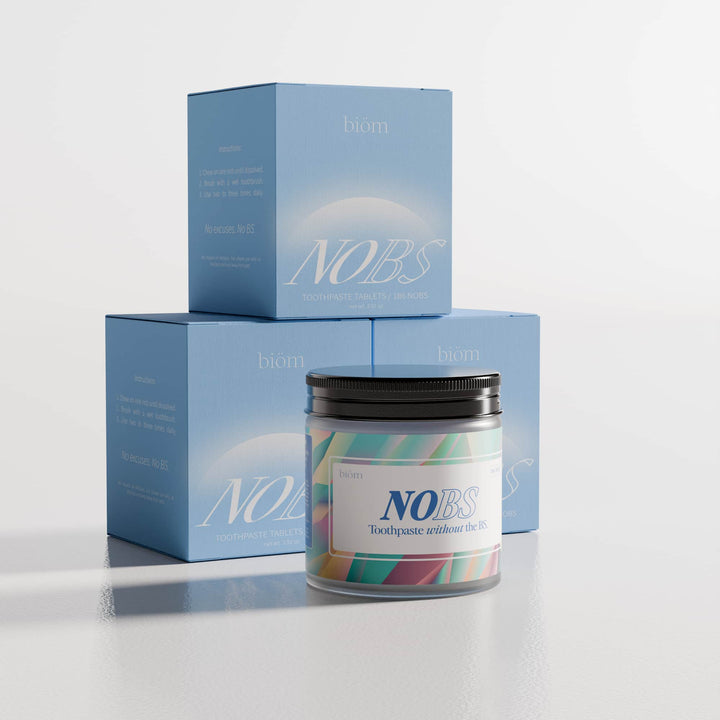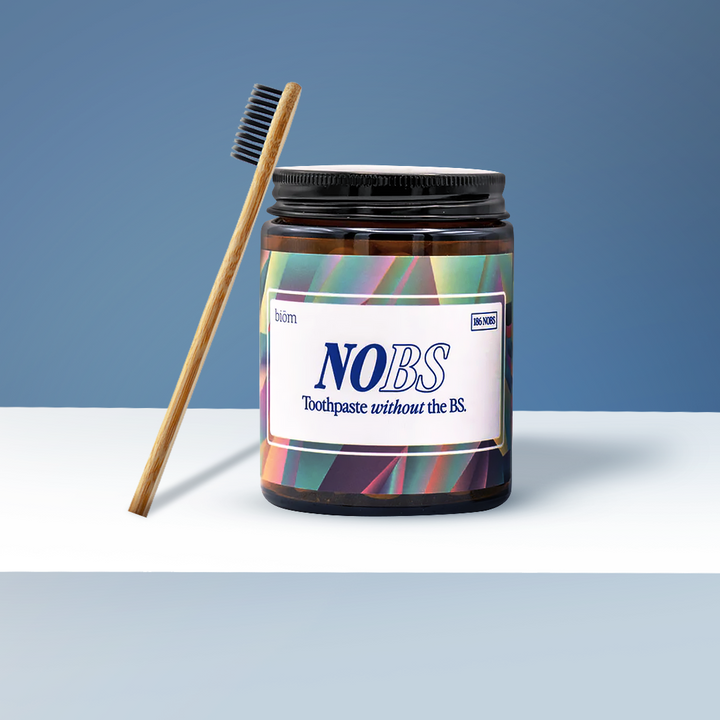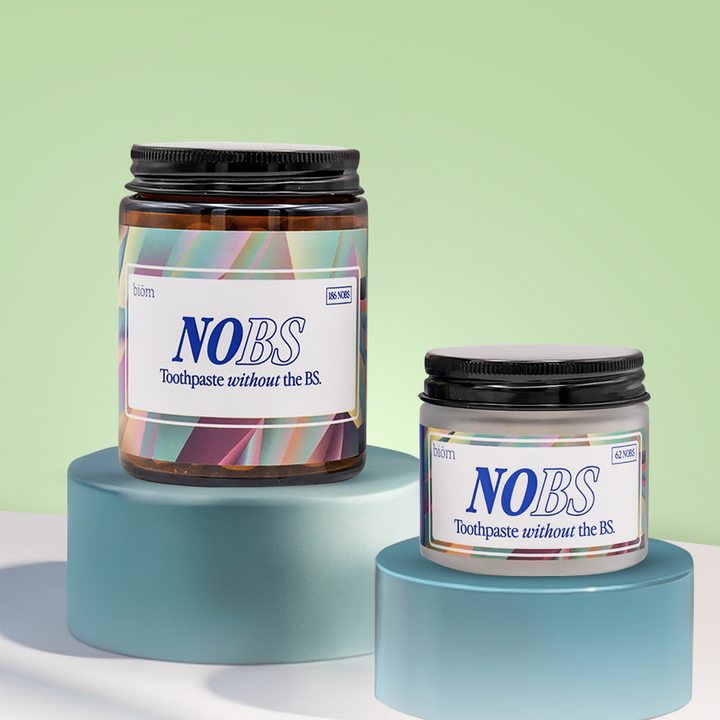How Long Does Remineralization Take?
Studies show that remineralizing toothpaste with nano hydroxyapatite can promote remineralization in as little as 8 weeks.
That said, remineralization is a gradual process that can vary in duration depending on several factors. For example, the extent of enamel damage is a rate limiting factor as minor surface defects or early enamel lesions remineralizing more quickly than deeper or more extensive damage.
For minor enamel erosion or early stages of tooth decay (also known as white spot lesions), remineralization can often start to reverse the damage within a few weeks of consistent exposure to nano hydroxyapatite toothpaste.
However, for the remineralization process to effectively repair enamel and significantly reduce your risk of cavities, it needs to be an ongoing effort that includes maintaining a diet low in acidic and sugary foods, practicing good oral hygiene, and ensuring regular intake of remineralizing agents.
It's important to note that while remineralization can repair early enamel erosion and small lesions, you cannot remineralize cavities that have progressed to form holes or structural damage in the teeth.
In this article, I'll explain everything about how long remineralization takes and how to remineralize your teeth at home.
FIRST, WHAT IS DEMINERALIZATION?
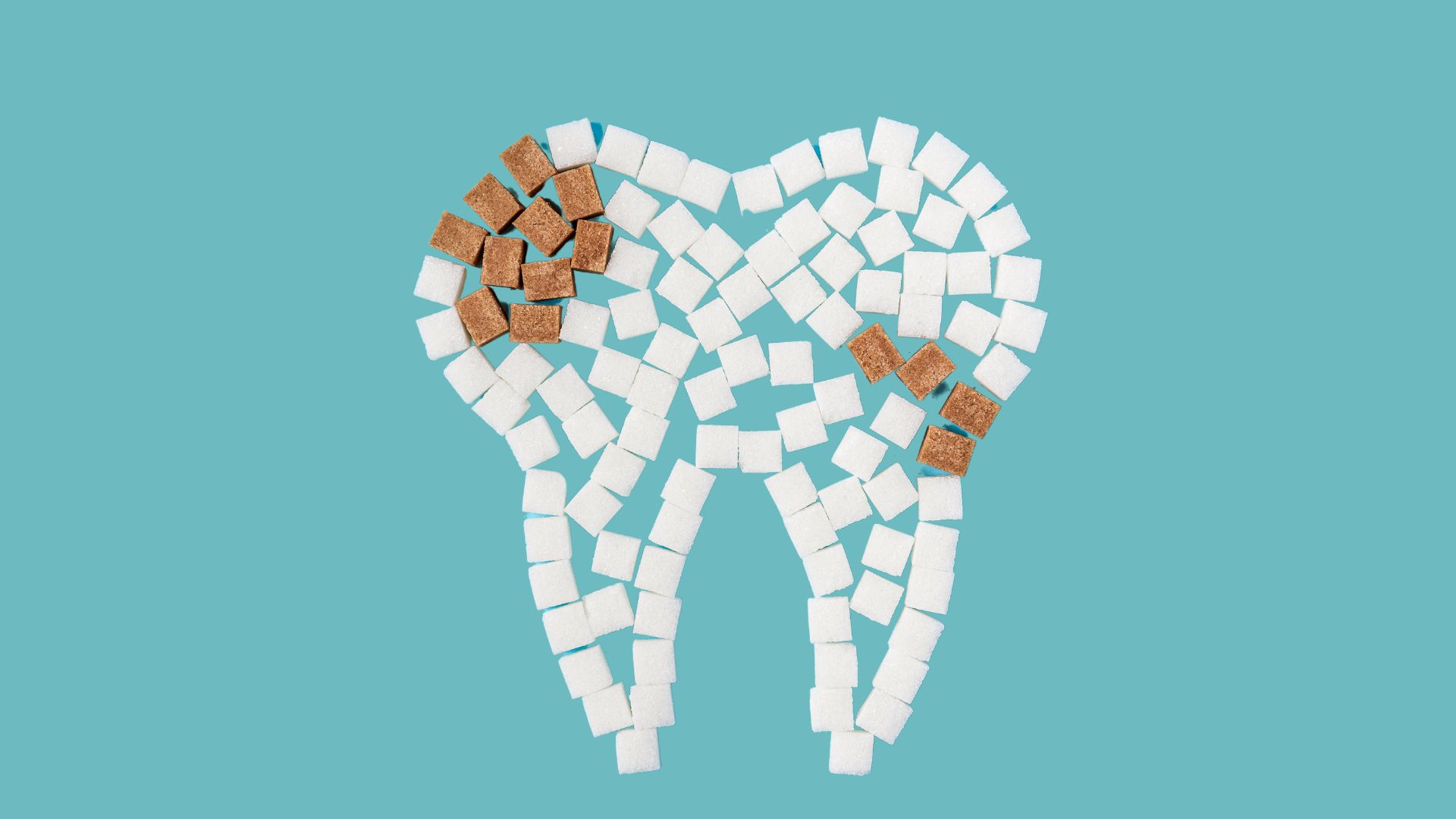
Demineralization is the process in which acids, often produced by the bad bacteria in our mouths, remove essential minerals like calcium and phosphate from our teeth. Through this process, our enamel surface gets weakened, and this eventually leads to tooth decay.
Without intervention, demineralization and dental decay can then progress to full blown dental caries (also known as cavities).
Preventing demineralization and promoting tooth remineralization are essential for protecting your teeth and promoting good oral health. The most popular tools for preventing demineralization include nano hydroxyapatite or fluoride toothpaste.
CAUSES OF TOOTH DEMINERALIZATION

Tooth demineralization is primarily caused by the interaction of acids with tooth enamel. These can be dietary acids or simply acids produced by the bad bacteria in our mouth. Let's walk through some of the main causes of demineralization:
BAD BACTERIA & PLAQUE
Dental plaque is a thin, sticky film that naturally forms on our teeth. It consists of bacteria colonies that feed on sugars and carbohydrates from the foods we consume.
As they metabolize these sugars, they produce acids as byproducts. These acids can gradually erode the minerals, primarily calcium and phosphate, from our teeth which leads to demineralization.
Regular brushing and flossing help remove dental plaque, reducing the presence of acid-producing bacteria and their harmful effects on enamel.
DIETARY ACIDS
Consuming acidic foods and beverages can directly introduce acids into our mouths, disrupting our oral pH.
For example, citrus fruits, carbonated sodas, and fruit juices are naturally acidic. When these acidic substances come into contact with tooth enamel, they can weaken the enamel's mineral structure, making it more susceptible to demineralization.
Limiting the intake of acidic foods and practicing good oral hygiene can help mitigate the impact of these dietary acids on teeth.
POOR ORAL HYGIENE
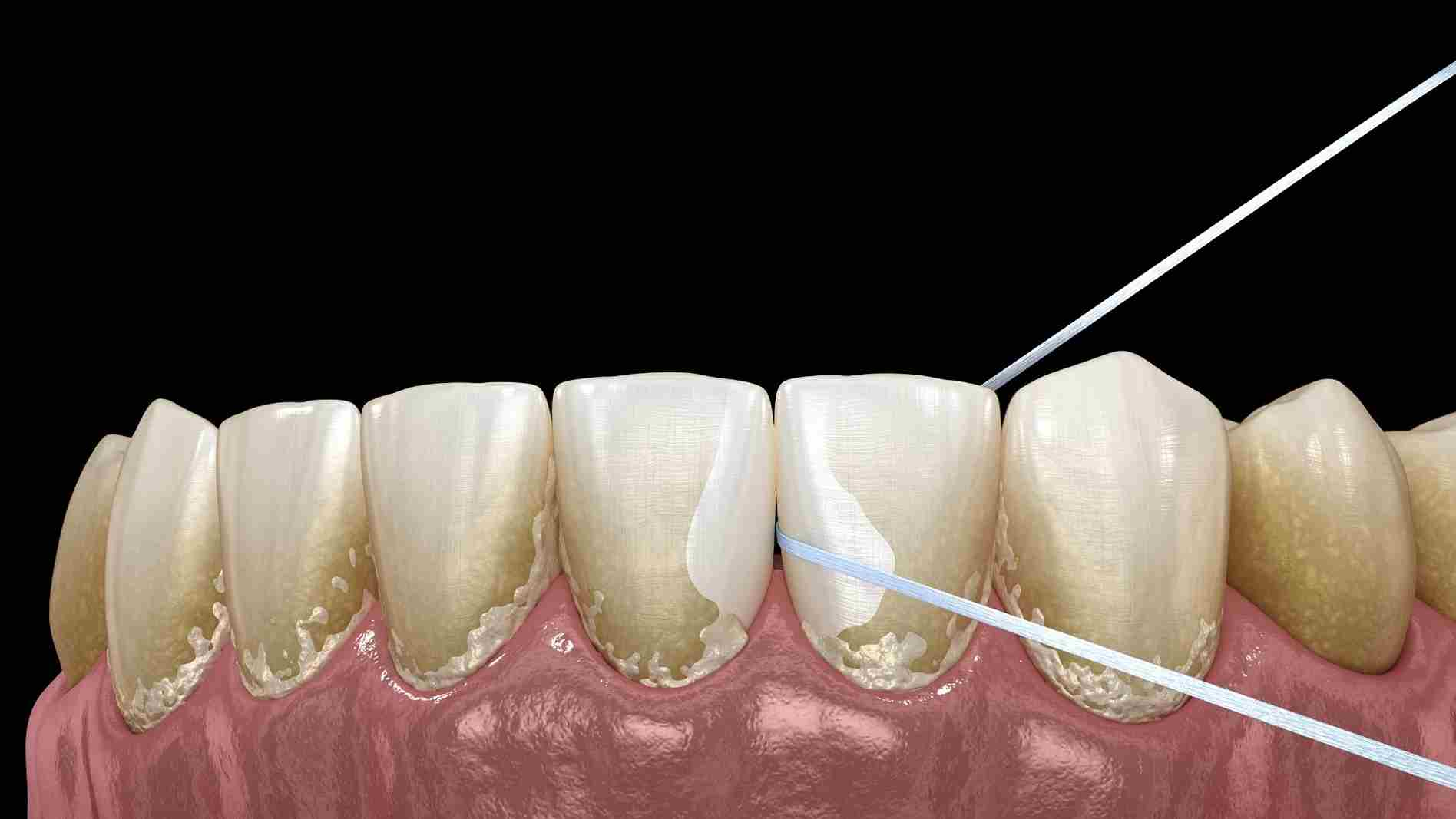
Inadequate oral hygiene practices, such as infrequent or insufficient brushing and flossing, can lead to dental plaque accumulating on tooth surfaces.
When plaque is not regularly removed, it provides a breeding ground for acid-producing bacteria. These bacteria thrive in the plaque and continuously generate acids as they metabolize sugars.
The prolonged exposure of teeth to these acids can result in demineralization, making regular and thorough oral care essential for preventing enamel damage.
DRY MOUTH
Saliva is known for its ability to neutralize acids and support the remineralization of enamel. It's an essential component of your oral microbiome.
However, conditions that reduce salivary flow, such as certain medications, medical conditions, or dehydration, can leave the mouth dry. In a dry mouth environment, acids are not effectively neutralized, and the protective effects of saliva are compromised.
This can lead to an increased risk of enamel demineralization and tooth decay, making it essential for individuals with dry mouth to manage this condition effectively.
To combat dry mouth, certain toothpastes and chewing gums contain xylitol, a compound that has been proven to promote saliva production and normalize oral pH.
ACID REFLUX
Conditions like acid reflux (gastroesophageal reflux disease or GERD) or frequent vomiting expose teeth to stomach acids, which are highly acidic and corrosive.
When these strong acids come into contact with tooth enamel, they can rapidly erode the minerals from the enamel surface, leading to demineralization.
Individuals with these conditions are at an elevated risk of enamel damage, and managing acid reflux or vomiting episodes is crucial to protect dental health.
OVERVIEW OF REMINERALIZATION VS. DEMINERALIZATION PROCESS
Demineralization involves the loss of minerals from tooth enamel due to acid exposure, which can lead to weakened enamel and tooth decay. Remineralization, on the other hand, is the natural process of depositing minerals back into the tooth structure which repairs and strengthens teeth.
Maintaining a balanced oral environment, practicing good oral hygiene, and using remineralizing toothpaste are essential for preventing demineralization and supporting the remineralization process to maintain healthy teeth.
YOUR SALIVA IS THE FIRST LINE OF DEFENSE
Saliva plays a vital role in remineralization by:
-
maintaining a balanced pH in your mouth
-
neutralizing acidic conditions that promote demineralization
-
and providing essential minerals like calcium and phosphate
It also contains antimicrobial properties that control harmful bacteria, reducing acid production and contributing to a healthier oral environment.
Essentially, saliva forms a protective coating over your teeth, acting as a barrier against external factors and providing lubrication to help maintain enamel integrity.
Additionally, increased salivary flow during activities like chewing stimulates remineralization by delivering minerals to tooth surfaces and rinsing away acids and debris.
Okay, so what is remineralization?
Remineralization is a natural process in which essential minerals, primarily calcium and phosphate, are deposited back into the enamel (aka the outermost layer of your teeth). This process repairs and strengthens enamel that has been weakened or damaged by acids and bacteria, ultimately reducing your risk of tooth decay and cavities
While teeth can remineralize over weeks or months, brushing daily with nano hydroxyapatite toothpaste for two minutes daily, using expandable floss at least three times per week, and limiting acidic and sugary foods in your diet can help.
Overall, remineralization is a fundamental aspect of maintaining strong and healthy teeth, and it takes not only good oral hygiene practices to achieve but also the use of remineralizing toothpaste and a balanced diet.
Signs of Tooth Remineralization
When it comes to signs of tooth remineralization, these includes a reduction in tooth sensitivity and the appearance of smoother, less chalky enamel.
Plus, white spots caused by demineralization may fade or become less noticeable as minerals are restored. Teeth may feel stronger and less prone to decay or erosion.
Further, a decrease in cavities or slowing of their progression can also indicate successful remineralization.
That’s why regular use of nano hydroxyapatite toothpaste and other remineralizing agents, such as xylitol or calcium phosphates, can aid in this process.
These ingredients help rebuild tooth enamel by replenishing lost minerals and strengthening the surface of the teeth.
Consistent oral hygiene practices, like brushing and flossing, along with a healthy diet, also support the remineralization process. Over time, this can lead to stronger, healthier teeth and a reduced risk of future decay.
Do teeth remineralize at night?
Yes, teeth can remineralize at night, especially with the use of remineralizing toothpaste containing nano-hydroxyapatite (nHAp).
Studies suggest that nano-hydroxyapatite, a biomimetic material, effectively fills microscopic enamel cracks and repairs weakened areas of the teeth. nHAp can bind to enamel and dentin, mimicking the mineral structure of teeth and enhancing their strength over time.
During sleep, saliva flow decreases, reducing the natural remineralization process. However, using nHAp toothpaste before bed creates a protective layer that continues to support enamel repair overnight.
Compared to traditional fluoride, studies show that nano-hydroxyapatite may offer comparable or superior benefits for remineralization and cavity prevention.
Therefore, combining this with good oral hygiene and avoiding acidic or sugary foods before bedtime can further enhance the teeth’s ability to remineralize.
What is hydroxyapatite toothpaste, is it best for remineralization?
Hydroxyapatite toothpaste is an oral care product containing hydroxyapatite, a mineral naturally found in teeth and bones, typically as an alternative remineralizing agent to fluoride.
Yes, it is best for remineralization, as it helps strengthen and repair tooth enamel by replacing lost minerals. It also promotes oral health by reducing tooth sensitivity and preventing tooth decay.
Hydroxyapatite toothpaste is a gentle, natural option for those looking to avoid fluoride while maintaining strong, healthy teeth. Regular use can effectively protect and rebuild enamel.
For best results, brush with it twice daily for two minutes, just like regular toothpaste.
WHAT IS REMINERALIZING TOOTHPASTE?
Remineralizing toothpaste is a type of toothpaste formulated with ingredients that enhance the natural process of remineralization in tooth enamel.
The primary goal of remineralizing toothpaste is to help repair and strengthen weakened enamel by depositing essential minerals, such as calcium and phosphate, back into your teeth. For example, nano hydroxyapatite toothpaste is great for remineralization because it is made of the same components as your natural tooth structure.
Remineralizing toothpaste can be particularly beneficial for individuals with early signs of enamel demineralization, tooth sensitivity, or a higher risk of cavities.
However, if you're wondering can remineralizing toothpaste heal cavities, it helps prevent and reverse early decay but isn't a substitute for professional dental treatment.
Can you restore tooth enamel naturally?
Yes, you can restore tooth enamel naturally to some extent.
The process, known as remineralization, happens when minerals like calcium and phosphate are restored to the enamel.
Using toothpaste with ingredients like nano-hydroxyapatite can help rebuild and strengthen enamel over time. Nano-hydroxyapatite works by bonding to the enamel and filling in small cracks or imperfections.
While this can help prevent further damage, it's important to remember that once enamel is completely worn away, it can't be fully restored.
Maintaining a good oral hygiene routine, including brushing and flossing, is key to supporting enamel health.
A healthy diet with proper nutrients also plays a role in keeping enamel strong.
How to Remineralize Your Teeth
Now that we understand the demineralization/remineralization process, let's walk through some tips for remineralizing teeth.
BRUSH WITH NANO HYDROXYAPATITE TOOTHPASTE

Nano hydroxyapatite toothpaste contains tiny particles of a synthetic form of hydroxyapatite, a mineral naturally found in your teeth and bones.
Brushing with this toothpaste can help strengthen enamel by depositing nano hydroxyapatite particles onto tooth surfaces, stimulating a process called remineralization. These particles bond with enamel, fill in minor surface defects, and promote remineralization. In fact, studies show that nano hydroxyapatite is effective at remineralizing teeth and reducing sensitivity in as little as 8 weeks.
Using nano hydroxyapatite toothpaste as part of your daily oral care routine can contribute to maintaining strong and healthy teeth.
FLOSS WITH EXPANDABLE FLOSS DAILY

Daily flossing with expandable floss is an excellent way to remove food particles and plaque from between your teeth and along the gumline. This practice supports overall oral health and reduces the risk of enamel demineralization by preventing the buildup of harmful bacteria and acids in these hard-to-reach areas.
We recommend using expandable floss at least three times per week but preferably daily for best results.
USE A TONGUE SCRAPER DAILY

Tongue scraping helps remove bacteria and debris from the tongue's surface, promoting fresher breath and reducing the presence of harmful microorganisms in the mouth.
Maintaining a cleaner oral environment can indirectly support remineralization by minimizing the impact of harmful bacteria.
USE ALCOHOL FREE MOUTHWASH AS NEEDED

Alcohol-free mouthwash can be a gentle choice for maintaining oral hygiene. It helps freshen your breath, reduce the growth of harmful bacteria, and provide supplement your usual routine of brushing and flossing.
Using alkaline mouthwash can help maintain a favorable environment for remineralization, especially when needed for additional oral care.
CHOOSE A TOOTHBRUSH WITH SOFT BRISTLES
Opting for a toothbrush with soft bristles is essential to avoid damaging enamel and gums during brushing. A soft-bristled toothbrush effectively removes plaque and food particles without causing unnecessary abrasion or damage to your enamel.
AVOID CHARCOAL TOOTHPASTE
Despite its popularity, charcoal toothpaste can be unecessarily abrasive and potentially harmful to enamel. Its abrasive nature can lead to enamel erosion, counteracting the remineralization process.
Instead, we recommend avoiding charcoal toothpaste choosing toothpaste with proven remineralizing agents like nano hydroxyapatite instead.
AVOID SUGARY AND ACIDIC FOODS IN YOUR DIET
Limiting the consumption of acidic and sugary foods and beverages is crucial for preventing enamel demineralization. These items can weaken enamel and contribute to dental issues.
To prevent issues with demineralization, we recommend that you reduce your consumption of acidic and sugary foods. Further, you can also rinse your mouth out with water or alcohol free mouthwash to neutralize the acidic and restore the natural pH of your mouth.
STOP SMOKING CIGARETTES
Smoking cigarettes can have detrimental effects on oral health, including an increased risk of gum disease, tooth decay, and oral cancer. Quitting smoking is a significant step toward supporting both your overall and dental health.
Frequently Asked Questions
How can you tell if your teeth are remineralizing?
You can tell if your teeth are remineralizing through various signs, such as a decrease in tooth sensitivity, improved enamel strength, and a smoother tooth surface. Additionally, your dentist may observe less visible signs of demineralization during regular check-ups, such as the appearance of white spots diminishing or the reversal of early signs of decay. Consistent use of remineralizing toothpaste or other dental products containing ingredients like nano hydroxyapatite can also contribute to the remineralization process, leading to healthier teeth over time.
How can I speed up my tooth remineralization?
To expedite tooth remineralization, you can implement several strategies. Firstly, maintain good oral hygiene practices, including regular brushing and expandable flossing to remove plaque and bacteria. Consider using remineralizing toothpaste containing ingredients like nano hydroxyapatite, which can aid in remineralization. Avoid excessive consumption of sugary and acidic foods and beverages, as they can contribute to demineralization. Additionally, ensure you're getting enough calcium and vitamin D in your diet, as these nutrients are essential for strong teeth. Finally, visit your dentist regularly for professional cleanings and assessments to monitor your progress and receive personalized recommendations.
How long does bone remineralization take?
The duration of bone remineralization can vary depending on factors such as the extent of bone loss, individual health factors, and treatment approaches. In general, bone remineralization can begin within weeks to months of initiating appropriate treatment, such as dietary changes, supplementation, or medical interventions. However, complete restoration of bone density and strength may take several months to years, especially in cases of more severe bone loss or conditions like osteoporosis. It's crucial to follow healthcare provider recommendations and maintain a healthy lifestyle to support the process of bone remineralization effectively.
Does remineralization fix cavities?
Remineralization can potentially help reverse early-stage cavities by restoring minerals to the enamel, making it stronger and more resistant to decay. However, once a cavity has progressed beyond the initial stage and has formed a hole or pit in the tooth, remineralization alone may not be sufficient to repair the damage. At this point, the cavity typically requires dental intervention, such as a filling, to restore the tooth's structure and prevent further decay. Regular dental check-ups can help detect cavities early when remineralization may still be effective as a preventive measure.
How does saliva contribute to remineralization?
Saliva plays a crucial role in tooth remineralization by providing essential minerals like calcium and phosphate, which help restore and strengthen enamel. It also helps neutralize acids produced by bacteria, creating a more favorable environment for minerals to be reabsorbed into the teeth. Additionally, saliva washes away food particles and sugars, reducing the risk of demineralization and decay.
Can diet affect tooth remineralization?
Yes, diet can significantly affect tooth remineralization. Consuming foods rich in calcium, phosphate, and vitamins, such as dairy products, leafy greens, and nuts, supports the replenishment of lost minerals in tooth enamel. Conversely, a diet high in sugars and acids can promote demineralization, hindering the teeth remineralization process and increasing the risk of tooth decay.
How long does it take for toothpaste to remineralize?
Toothpaste with remineralizing agents like nano-hydroxyapatite can begin strengthening enamel within a few days of consistent use. However, the full remineralization process may take weeks to months, depending on the extent of enamel damage and oral care habits. Regular use and a healthy diet can enhance and sustain these effects over time.
How long does it take to reverse tooth damage?
The time it takes to reverse tooth damage depends on the severity of the damage and the treatment used. Minor damage like enamel erosion can take weeks to months to improve with proper care. More severe damage may require professional dental treatments like fillings or crowns.
How do you know if your teeth are permanently damaged?
Permanent tooth damage often involves deep cracks, fractures, or extensive enamel loss that doesn’t improve with regular oral care. Signs like persistent pain, discoloration, or sensitivity may indicate irreversible damage. A dentist can assess and confirm the extent of the damage.
Can weak teeth become strong again?
Weak teeth can become stronger through remineralization, which can be supported by nano-hydroxyapatite treatments. However, severe damage like deep cavities or fractures may require restorative procedures. Regular brushing, flossing, and avoiding acidic foods also help maintain tooth strength.
How can I strengthen my teeth?
To strengthen your teeth, brush with fluoride-free toothpaste containing nano-hydroxyapatite, which helps remineralize and protect tooth enamel. Floss daily to remove plaque and food particles that can lead to decay. Eating a balanced diet with calcium, vitamin D, and phosphorus, while avoiding sugary snacks and drinks, also supports strong, healthy teeth.
Can you fully remineralize teeth?
Teeth can remineralize to some extent, but they cannot fully regrow lost enamel. Using hydroxyapatite toothpaste helps restore minerals and strengthen weak areas. However, deep cavities or severe enamel loss cannot be reversed and may need dental treatment.
How long does it take for teeth to remineralize after whitening?
After whitening, teeth start remineralizing immediately, but it can take a few days to a few weeks to fully regain strength. Using remineralizing toothpaste and avoiding acidic or staining foods helps speed up the process. Drinking water and using fluoride or hydroxyapatite toothpaste can also protect your enamel.
When is it too late to remineralize teeth?
It is too late to remineralize teeth when cavities become deep or reach the inner layers of the tooth. At that point, a dentist will need to fill or repair the damage. However, if the enamel is only starting to weaken, using nano-hydroxyapatite can help restore lost minerals and prevent further decay.
Does xylitol in toothpaste help remineralize teeth?
Xylitol does not directly remineralize teeth, but it helps reduce harmful bacteria that cause cavities. With fewer bacteria producing acid, your enamel has a better chance to stay strong. For the best protection, use toothpaste with nano-hydroxyapatite, which actively repairs and strengthens enamel.


